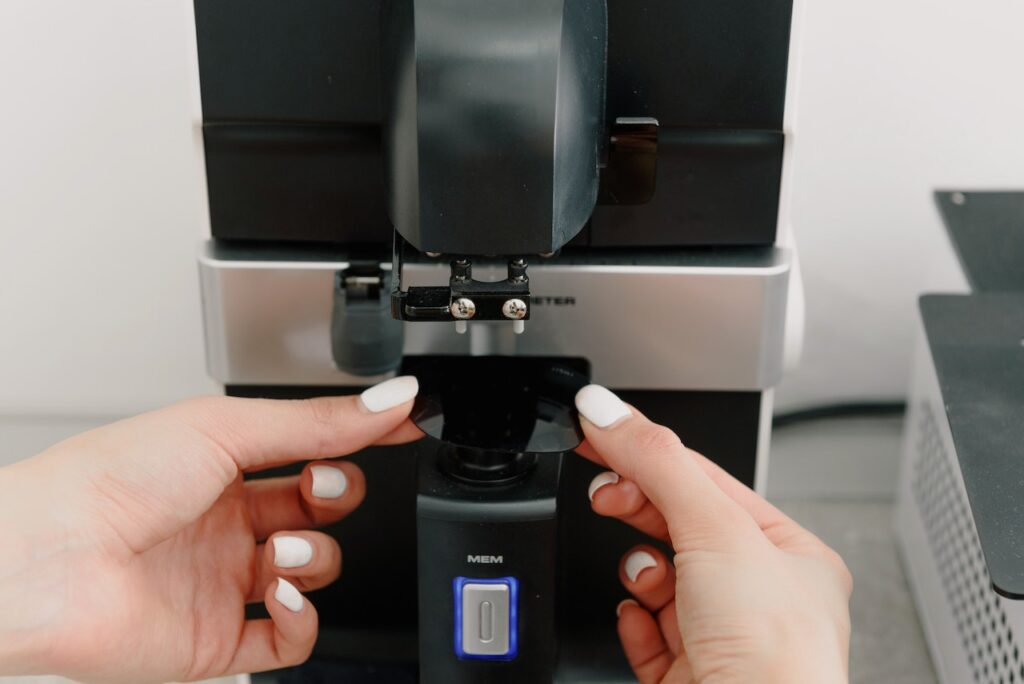It’s all hell breaking loose when the espresso machine in the office kitchen breaks down. Frustration echoes throughout the room and testosterone levels rise to an all-time high. The value of espresso machines is undeniable in the workplace; hence, you should know how to fix an espresso machine.
How to Fix an Espresso Machine
To troubleshoot your machine, you will need to open it up. These machines are complex devices. They have many moving parts and are often made of metal, plastic, or other materials that may break or wear down over time. If your machine is not working correctly, you may be able to fix it before taking it to a repair technician.

Step 1: Check the Power Cord
Unplug the power cord from the wall outlet. Check for any frayed wires or damage to the cord itself. If your machine has a separate water heater, turn it off and unplug it from its power source. If your machine does not have a separate water heater, skip this step and continue with Step 2 below.
Step 2: Unscrew and Open the Machine’s Backsplash
To unscrew and open the backsplash, you will need a screwdriver with a broad head that can grip the screws found inside the housing. The size of these screws will vary from model to model, so check your owner’s manual if you do not know which size to use.
Once you’ve opened up your backsplash, look for any loose parts or cables that may have come loose during shipping or use. If you see any damaged parts, replace them before proceeding.
Step 3: Remove the Water Tank
The water tank is located on the back of your machine. Unscrew the tank and remove it from the back of your appliance. Look inside and make sure there is no residue or scale buildup inside. If there is, clean it out with a soft scrub brush or cloth and hot water.
Step 4: Check for Leaks
Check all connections between components inside your machine’s housing if you find any leaks. Make sure nothing has come loose or disconnected from its proper place. If necessary, tighten any loose screws with a screwdriver to prevent further damage to your appliance.
Step 5: Replace Broken Parts
If your machine still doesn’t work after troubleshooting all its parts, you may need to replace one or more pieces of broken equipment inside your device’s housing. Call a professional repair technician if you’re unsure how to fix specific components in your particular model of machine.

How to Fix Espresso Machine Related Issues
There are several different kinds of issues that might occur with an espresso machine: These are the most common.
Coffee Is Too Weak
This is probably the most common complaint about these machines. Check your grind size and tamp pressure if you’re making straight espresso shots that are too weak or watery. If those are fine, then it may be time to replace the basket filter with one that’s a bit firmer (you’ll need to buy a new one).
Espresso Is Coming Out Too Slowly or Not at All
Check the water level in your tank (you may need to add more water), ensure the filter basket or holder is attached correctly, ensure there’s no blockage in the lines, and check for damages in hoses or cables. You may need to clean the portafilter head with vinegar if it’s clogged with debris from using a paper filter instead of a metal one.
Espresso Tastes Bitter or Burnt
This could be caused by over-extraction or under-extraction. To fix this problem, adjust your grind setting so it’s slightly finer than usual (for under-extraction) or slightly coarser than usual (for over-extraction).
Steam Wand Doesn’t Produce Steam
Ensure the water tank is attached and filled with water. Also, check that the steam trigger is depressed down by pulling it up and pressing it back down again. The steam wand should release a few bursts of steam when you do this. If it doesn’t, your machine may have an internal problem requiring you to contact a professional for help.
Water Line Is Broken
If the water line is broken or cracked, your machine won’t fill with water correctly. This is a very common issue with older machines or ones that haven’t been adequately maintained. You can easily replace this part by calling an appliance repair professional or buying a new one online.
What Factors Determine When to Do Routine Maintenance for Your Espresso Machine?
If it is properly maintained, your appliance can last anywhere from 6 to 10 years. If you want to ensure the machine is working properly, it’s important to keep track of these factors and perform routine maintenance.
The Age of Your Machine
If your machine is over five years old, or if it has been used for more than 20,000 cups of coffee and cleaned regularly, then it’s time for a service.
The Frequency of Use
Espresso-making machines are designed to be used frequently and consistently. When they’re used daily, or multiple times per day, they will require more frequent cleaning and maintenance than less-used machines.
If you have an older model sitting in a closet for years, you might need to have it serviced before using it again. If it hasn’t been cleaned regularly, there could be build-up inside the machine that could cause leaks or other problems.
The Water Hardness
Water hardness can affect how often you need to clean and maintain your machine because hard water deposits mineral deposits on equipment over time as well as cause scale buildup in pipes and tubes inside machines, which can affect how well they function over time.

What Tools Do You Need to Fix an Espresso Machine?
Before trying to fix your machine, be sure you have the required tools. This means having a
- A Phillips screwdriver
- Allen wrench and
- Philips head screwdriver
- Utility knife (razor blade)
- Silicon grease (optional)
- Needle-nose pliers
If the repair is more complicated than simply tightening a few screws, you may also need a soldering iron or solder. As with any electrical appliance or tool, be sure not to use one that isn’t rated for high temperatures or doesn’t have an insulated handle. You might also want to purchase some pliers and wire cutters if any parts inside the machine need to be removed before repair can begin.
Related Questions
Why Is My Espresso Machine Not Brewing?
Your espresso-making machine is not brewing because there could be no water in the reservoir (make sure there is water in the tank and it’s not empty). Another reason could be that the filter basket is not locked or seated properly. Ensure the filter basket is locked, then try brewing again.
How Do You Reset an Espresso Machine?
If you want to reset your espresso machine, simply follow these steps: Turn off the power switch on your machine. Press and hold down the brew button for 10 seconds. Release the brew button once you hear a beep. If your machine does not turn on after you have tried to reset it, unplug it for about 10 minutes before plugging it back in again.
Conclusion
You can fix a number of problems with an espresso machine, including weak coffee, burned or bitter espresso, and a dirty water reservoir. Identify the duration and frequency of your last service, the hardness of your local water supply, and how frequently you use your machine for an assessment of whether it needs repair.



